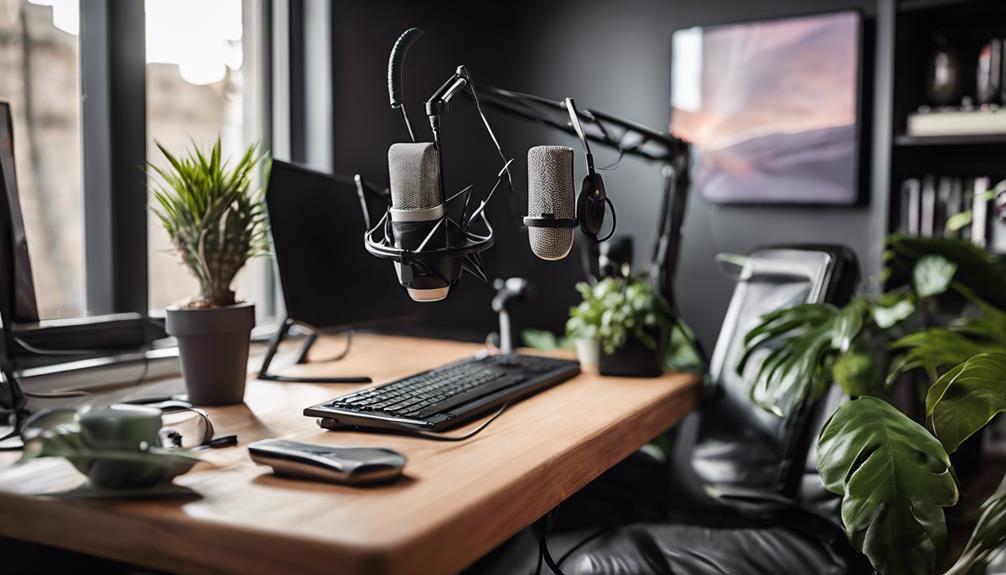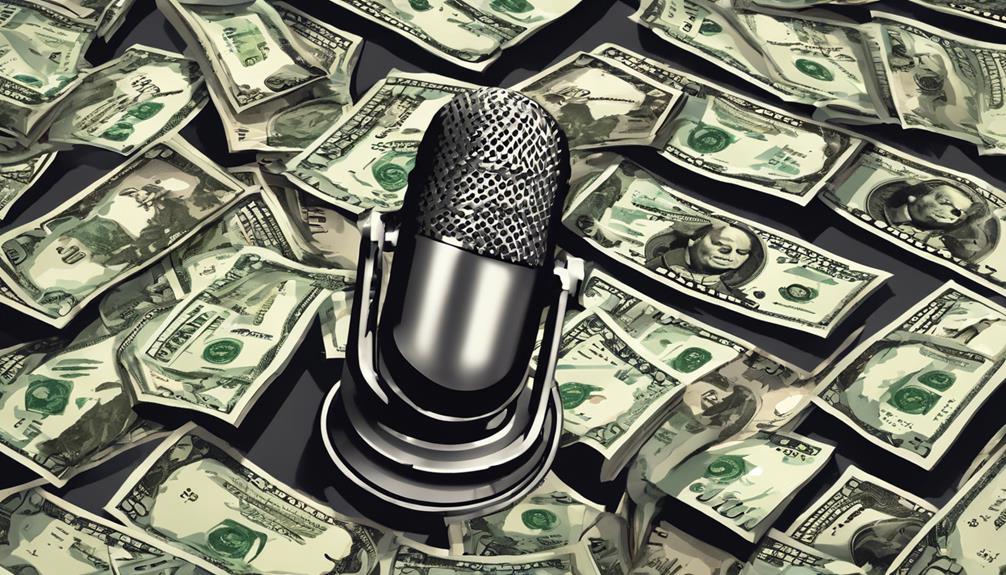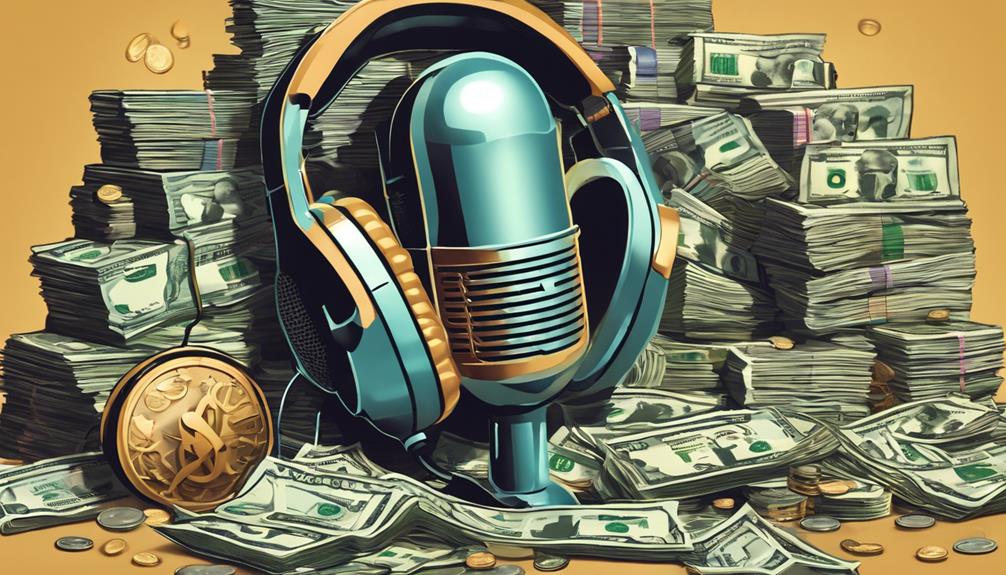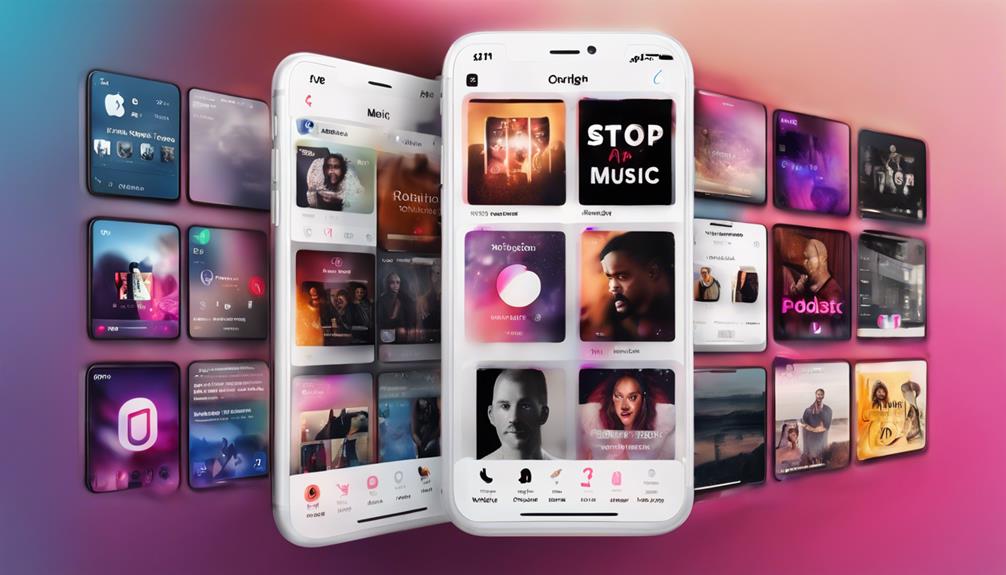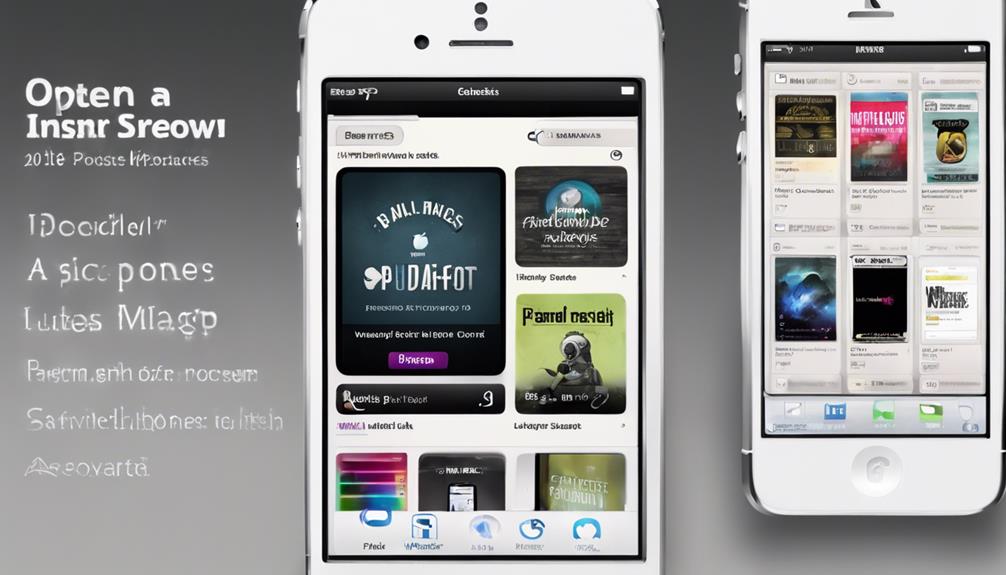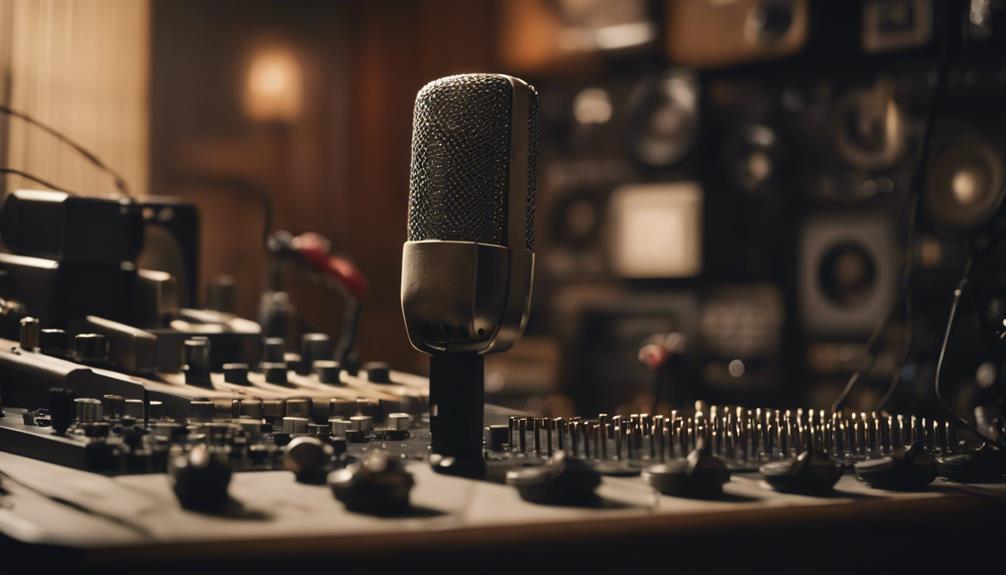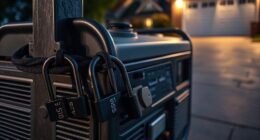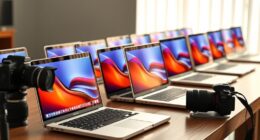When starting a podcast, essential gear includes microphones (USB for easy use, XLR for top sound), recording software (like Skype for interviews), quality headphones (for clear listening and speaking), a mixer (enhances audio), and acoustical treatments (for studio-like sound). These tools boost production and audio quality, laying the foundation for successful podcasting.
Key Takeaways
- Choose between USB or XLR microphones based on convenience or sound quality.
- Use recording software like Skype, Zoom, Ringr for high-quality audio and editing capabilities.
- Select closed-back headphones for sound isolation and precise volume control.
- Invest in a mixer with multiple channels and preamps for enhanced production quality.
- Implement acoustical treatments like foam tiles and panels for professional audio standards.
Microphones
When starting a podcast, selecting a microphone that suits our needs and budget is essential. USB microphones are user-friendly options, perfect for beginners diving into podcasting. These mics plug directly into our laptop, eliminating the need for additional gear.
On the other hand, XLR microphones offer superior sound quality, ideal for those seeking professional-grade recordings. However, they require extra equipment like audio interfaces. To enhance our audio quality, a pop filter is a must-have accessory. It helps reduce plosive sounds, ensuring our recordings are clear and crisp.
For ideal positioning and convenience during recording sessions, investing in a microphone arm can greatly improve our setup. When choosing a microphone, ensuring compatibility with our laptop is important. This compatibility ensures seamless integration and prevents any technical hiccups that could disrupt our podcasting workflow.
Recording Software
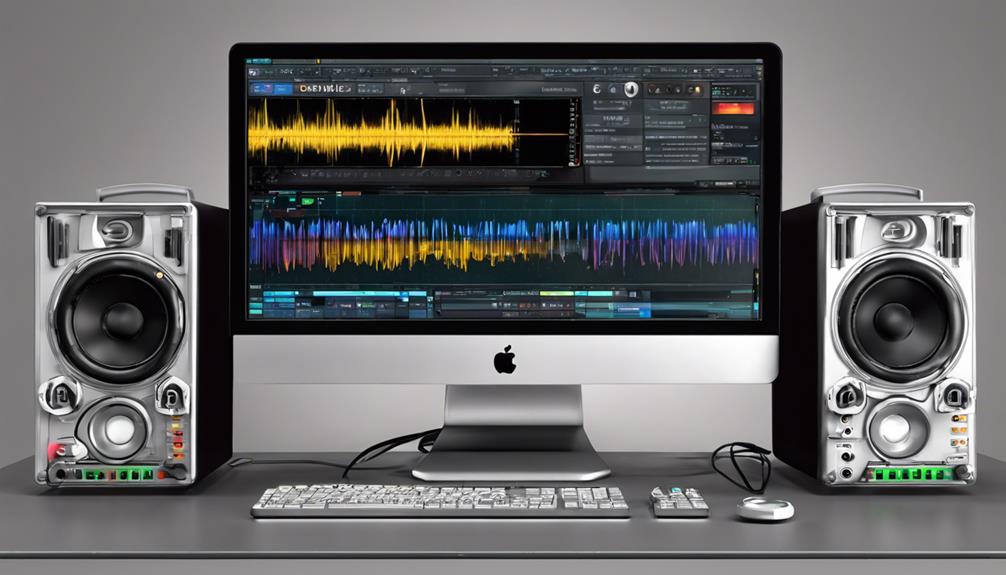
Selecting the appropriate recording software is essential for ensuring efficient and high-quality podcast production. When looking for the right audio recording software, consider options that offer remote podcast creation, collaboration with guests, and professional audio production. Some popular choices in the market include:
- Skype: Known for its usability and widespread adoption in remote podcast interviews.
- Zoom: Offers excellent audio quality and the ability to record separate audio tracks for each participant.
- Ringr: Ideal for capturing high-quality audio from remote guests with minimal background noise.
- Squadcast, Riverside: Both platforms are dedicated to providing editing capabilities and tools for producing high-quality podcasts seamlessly.
With these innovative recording software tools, podcasters can enhance their production quality, engage with guests remotely, and streamline the editing process to deliver compelling content to their audience.
Headphones
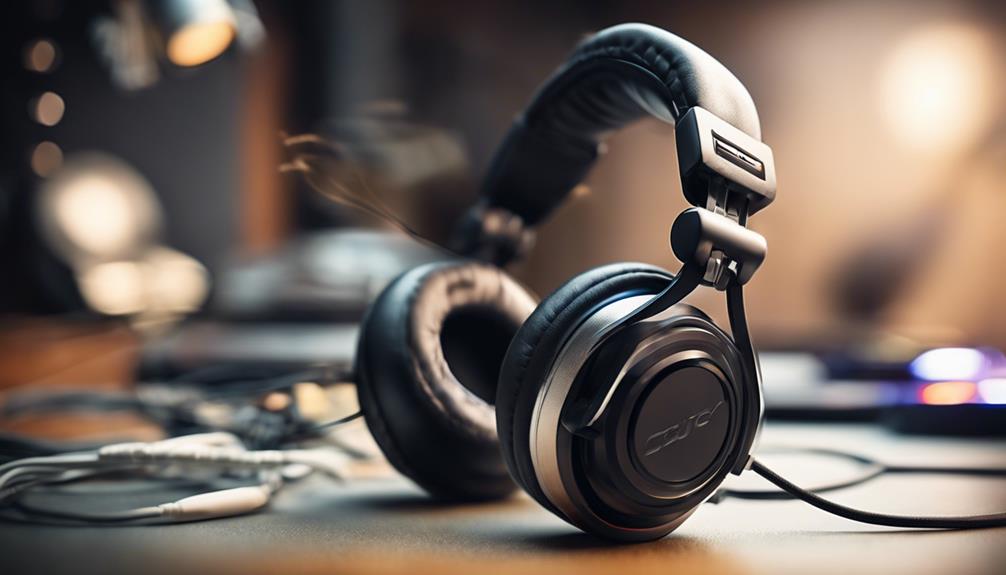
To optimize podcast recordings, incorporating suitable headphones is essential for maintaining quality control and preventing feedback.
When selecting headphones for podcasting, consider factors such as frequency response and sound isolation to guarantee clear and accurate sound monitoring.
Closed-back headphones are recommended as they help minimize sound leakage, keeping the audio focused and preventing distractions. These headphones not only aid in quality control but also enhance microphone technique by providing a more accurate representation of the recording.
By using headphones with good sound isolation, hosts can prevent plosive sounds and other unwanted noises, resulting in cleaner podcast recordings.
Additionally, clearer voice monitoring allows hosts to adjust their speaking volume and tone effectively, leading to a more professional and engaging podcast.
Therefore, investing in the right headphones is crucial for podcasters looking to elevate the quality of their content and provide a more immersive listening experience for their audience.
Mixer
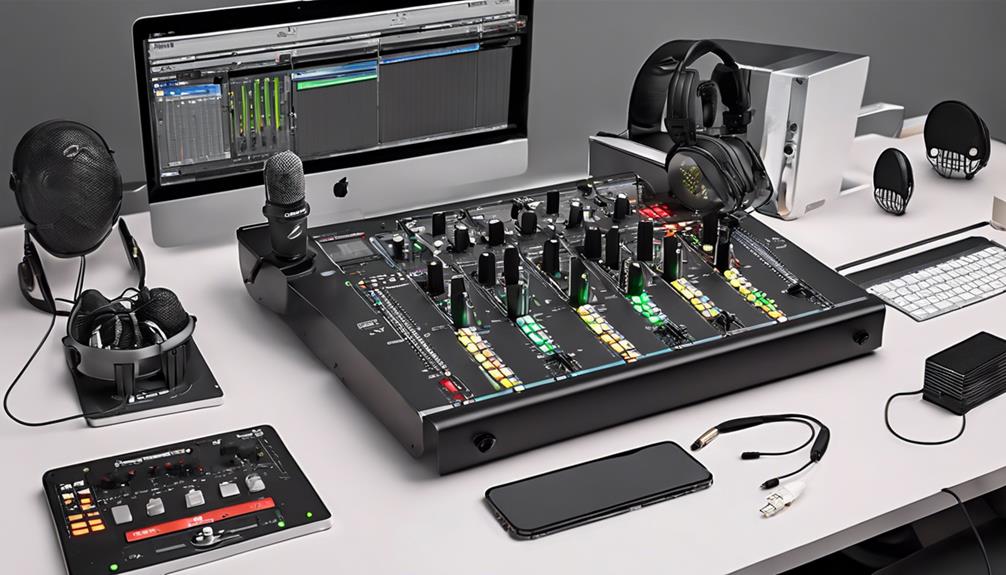
For podcasters seeking to enhance their audio quality and production capabilities, incorporating a mixer is an essential step in optimizing their content creation process. When considering mixers for your podcasting setup, here are some key features to look for:
- Multiple Channels: Choose a mixer that offers multiple channels to accommodate various audio sources simultaneously.
- Preamps: Having built-in preamps can help boost the quality of your XLR microphones and other audio inputs.
- Audio Interfaces: Some mixers can double as audio interfaces, simplifying your setup and offering more control over inputs and outputs.
- Production Quality: Mixers play a vital role in improving production quality, especially for podcasts with remote guest calls or live music features.
Acoustical Treatments
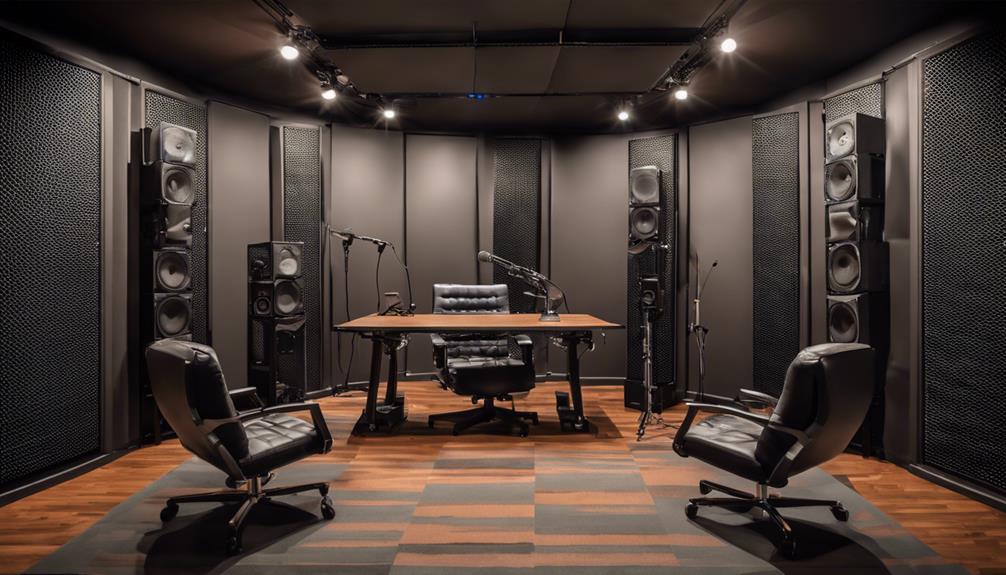
When looking to optimize podcast audio quality and reduce unwanted echoes, acoustical treatments become pivotal in creating a professional recording environment. These soundproofing solutions, such as foam tiles and carpeting, play an essential role in enhancing sound quality.
Acoustic panels strategically placed on walls and ceilings can further improve audio clarity and eliminate reverberations. Maintaining professional audio standards in podcast recordings is reliant on effective acoustical treatments.
Consideration of Class A acoustic tiles, foam windscreens, and windjammers is key to achieving excellent sound quality. By investing in these acoustical treatments, podcasters can create a controlled environment that minimizes echoes and ensures a crisp, professional sound output.
Whether it's setting up a home studio or enhancing an existing recording space, incorporating these soundproofing elements is essential for producing high-quality podcasts that captivate listeners.
Frequently Asked Questions
What Equipment Do I Need for a Podcast?
When starting a podcast, you'll need essential equipment like a computer, microphone, headphones, pop filter, and recording software.
A laptop is great for portability and processing power. Microphones come in USB and XLR types, with condenser mics offering clearer sound.
Pop filters help remove plosive sounds. Make sure to use a microphone stand for ideal positioning.
These tools are essential for quality podcast recordings.
What Equipment Do I Need to Be a Podcast Guest?
We need a good quality microphone and headphones for clear audio and communication.
Using a pop filter or windscreen can improve audio quality by reducing unwanted sounds.
A stable internet connection is vital for remote interviews.
Familiarizing ourselves with the podcast's topic and format is essential.
What Is the Most Important Piece of Equipment if You Are Making a Podcast?
When creating a podcast, the most essential piece of equipment is a high-quality microphone. It guarantees clear and professional audio, capturing voices with minimal background noise. Investing in a good microphone greatly enhances the overall quality of episodes.
Microphones come in various types like USB and XLR, each offering unique sound quality and versatility. Using a dedicated microphone rather than built-in computer mics enhances the production value of your recordings.
What Are Podcasters Needs?
When podcasting, our needs include a reliable computer for recording, editing, and publishing audio files. A quality microphone is essential for capturing clear sound, while pop filters and windscreens help reduce plosive sounds.
Microphone stands guarantee proper positioning for hosts and guests, maintaining consistent audio quality. An audio interface is vital for converting analog signals to digital format, especially when using multiple microphones.
Conclusion
To sum up, having the right podcasting equipment is essential for producing high-quality audio content. Just like a painter needs their brushes and canvas, a podcaster needs their microphones and recording software to create their masterpiece.
Investing in quality equipment can make a significant difference in the final product, ensuring that your podcast sounds professional and engaging. So, don't skimp on the essentials – equip yourself with the tools you need to make your podcast shine.

